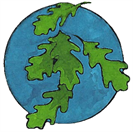

Botanical
This long lived native pine tree takes various forms depending on its location. Coastal trees usually reaches heights of 25-30 feet and 1-1.5 feet in diameter. It is often found with a Krummholz form. This twisted, often horizontally spread form is the result of constant winds that deform the tree over time. Inland, or interior, lodgepole pines are considerably taller and wider. It is common for them to grow between 75-100 feet in height and double the width of their coastal counterparts, reaching up to 3 feet in diameter. A rapidly growing native tree, at 20 years, the average attained height is 30 feet. The crown is somewhat open, thin and narrow with low branches. Needles vary between growth habitats as well. Generally, lodgepole pine needles are between 1-3 inches in length but coastal tree needles are rarely longer than 1 inch. They come in bundles of 2 in all areas except the Yukon Territory where they are more often 3 bundled. All needles, regardless of site, are stiff, sharp tipped, twisted, and tend to stay together rather than hang open. They also persist on the tree for 3 or more years. Color ranges from yellowish-green to dark green. Ovulate (female) cones are ovoid and often lopsided. They grow between 1.2-2.5 inches long while the male staminate cones are under .5 inches in length. Each scale has a stiff prickle on the tip and the hard, heavy cones persist on the tree for many years.
Lodgepole pine cones have an evolved a mechanism for surviving
fires. The cones are serotinous, which means they are fire activated
to open and release the seeds. Seeds are protected inside the
cone and remain undamaged and viable. On mature trees, the
bark is black to light brown and scaly. The new orange color bark
may be seen under the fissured outer surface. Thickness varies
with elevation and is thinner at higher altitudes. The range is .5-12
inches thick. Thick bark also helps protect against fire damage.
This long lived native pine tree takes various forms depending on its location. Coastal trees usually reaches heights of 25-30 feet and 1-1.5 feet in diameter. It is often found with a Krummholz form. This twisted, often horizontally spread form is the result of constant winds that deform the tree over time. Inland, or interior, lodgepole pines are considerably taller and wider. It is common for them to grow between 75-100 feet in height and double the width of their coastal counterparts, reaching up to 3 feet in diameter. A rapidly growing native tree, at 20 years, the average attained height is 30 feet. The crown is somewhat open, thin and narrow with low branches. Needles vary between growth habitats as well. Generally, lodgepole pine needles are between 1-3 inches in length but coastal tree needles are rarely longer than 1 inch. They come in bundles of 2 in all areas except the Yukon Territory where they are more often 3 bundled. All needles, regardless of site, are stiff, sharp tipped, twisted, and tend to stay together rather than hang open. They also persist on the tree for 3 or more years. Color ranges from yellowish-green to dark green. Ovulate (female) cones are ovoid and often lopsided. They grow between 1.2-2.5 inches long while the male staminate cones are under .5 inches in length. Each scale has a stiff prickle on the tip and the hard, heavy cones persist on the tree for many years.
Lodgepole pine cones have an evolved a mechanism for surviving
fires. The cones are serotinous, which means they are fire activated
to open and release the seeds. Seeds are protected inside the
cone and remain undamaged and viable. On mature trees, the
bark is black to light brown and scaly. The new orange color bark
may be seen under the fissured outer surface. Thickness varies
with elevation and is thinner at higher altitudes. The range is .5-12
inches thick. Thick bark also helps protect against fire damage.
Sources:
Trees of North America- A guide to field identification-a Golden Field Guide from St. Martin's Press © 2002 By C. Frank Brockman p.26
The Encyclopedia of North American Trees by Sam Benvie. Firefly Books Ltd.,2000 Buffalo, NY © 2000 Sam Benvie p.264
Diseases of Trees and Shrubs, 2nd edition, by Wayne A. Sinclair and Howard H. Lyon, © 2005 Cornell University, Cornell University Press, p. 300, 446, 502
USDA, NRCS. 2011. The PLANTS Database (<http://plants.usda.gov/>, 22 August 2011). National Plant Data Team, Greensboro, NC 27401-4901
Anderson, Michelle D. 2003. Pinus contorta var. Latifolia. In: Fire Effects Information System, [Online]. U.S. Department of Agriculture, Forest Service, Rocky Mountain Research Station, Fire Sciences Laboratory (Producer). Available: http://www.fs.fed.us/database/feis/ [2011, August 22].
Trees of North America- A guide to field identification-a Golden Field Guide from St. Martin's Press © 2002 By C. Frank Brockman p.26
The Encyclopedia of North American Trees by Sam Benvie. Firefly Books Ltd.,2000 Buffalo, NY © 2000 Sam Benvie p.264
Diseases of Trees and Shrubs, 2nd edition, by Wayne A. Sinclair and Howard H. Lyon, © 2005 Cornell University, Cornell University Press, p. 300, 446, 502
USDA, NRCS. 2011. The PLANTS Database (<http://plants.usda.gov/>, 22 August 2011). National Plant Data Team, Greensboro, NC 27401-4901
Anderson, Michelle D. 2003. Pinus contorta var. Latifolia. In: Fire Effects Information System, [Online]. U.S. Department of Agriculture, Forest Service, Rocky Mountain Research Station, Fire Sciences Laboratory (Producer). Available: http://www.fs.fed.us/database/feis/ [2011, August 22].
Lodgepole Pine,
Pinus contorta Douglas ex Louden
Pinus contorta Douglas ex Louden
Common names: Tamarack Pine, Rocky Mountain Lodgepole Pine, Interior Lodgepole Pine, Tall Lodgepole Pine, Sierra Lodgepole Pine, Shore Pine, Mendocino Shore Pine
State List: AK, CO, ID, MT, OR, SD, UT, WA, WY
Canada: AB, BC, NT, SK, YT
Visit the Image Gallery for more photos
Visit all North American native pine tree species.
Pinus contorta Douglas ex Louden has four variations. They are:
• Pinus contorta Douglas ex Louden var. bolanderi
(Parl.) Vasey- Bolander Beach Pine
• Pinus contorta Douglas ex Louden var. Contorta- Beach Pine
• Pinus contorta Douglas ex Louden var. latifolia
Engelm. ex S. Watson- Lodgepole Pine
• Pinus contorta Douglas ex Louden var. murrayana
(Balf.) Engelm.- Sierra Lodgepole Pine
The latter is protected in Nevada. In British Columbia, some plant communities have been classified as critically imperiled.
State List: AK, CO, ID, MT, OR, SD, UT, WA, WY
Canada: AB, BC, NT, SK, YT
Visit the Image Gallery for more photos
Visit all North American native pine tree species.
Pinus contorta Douglas ex Louden has four variations. They are:
• Pinus contorta Douglas ex Louden var. bolanderi
(Parl.) Vasey- Bolander Beach Pine
• Pinus contorta Douglas ex Louden var. Contorta- Beach Pine
• Pinus contorta Douglas ex Louden var. latifolia
Engelm. ex S. Watson- Lodgepole Pine
• Pinus contorta Douglas ex Louden var. murrayana
(Balf.) Engelm.- Sierra Lodgepole Pine
The latter is protected in Nevada. In British Columbia, some plant communities have been classified as critically imperiled.
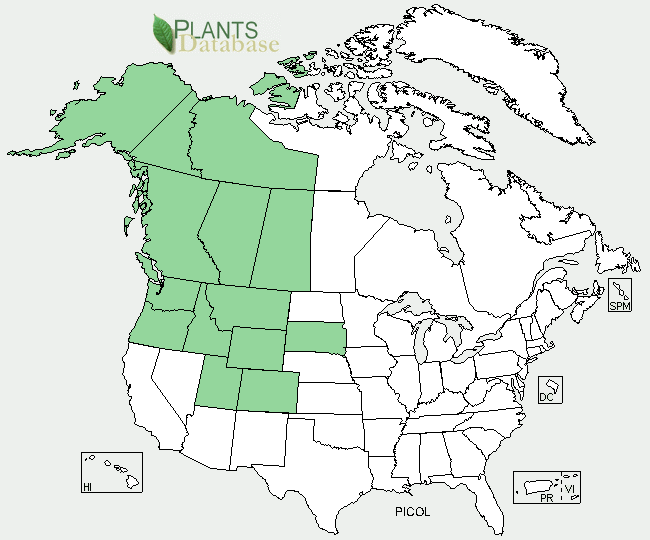
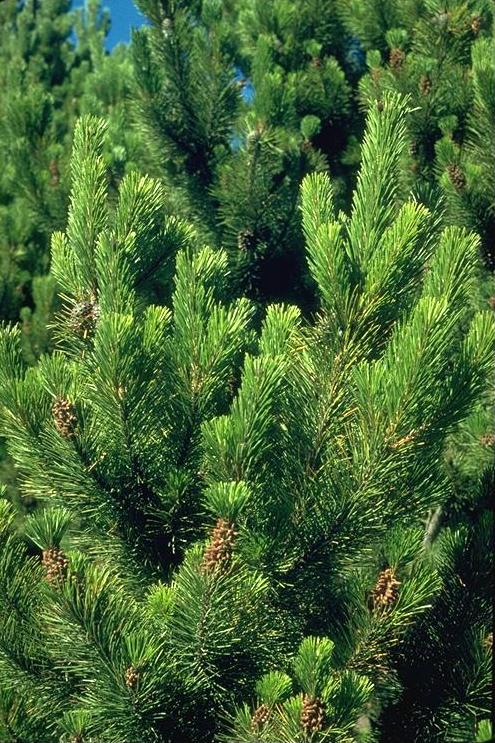

Interesting fact: Half of the cones on a Lodgepole Pine are serotinous, meaning they are fire activated for seed release and burned areas are quickly reseeded. Survival insurance!
Habitat and the Elements
Pinus contorta is found at higher elevations ranging from 1,500 feet to 11,500 feet. Although it grows on just about any soil type, stands growing on broad ridges and in high valleys tend to be well developed. It does prefer sandy soils, in or near bogs, with a pH between 6.2-7.5. It is intolerant of saline soils. Annual rainfall needs are 18-25 inches and the number of frost free days needs to be around 100. Lodgepole pine is highly frost tolerant and can survive down to -70°F.
Fire Ecology
Pine trees have a number of fire related adaptations and this native plant can survive low intensity fires. In addition to the thick bark and serotinous cones, Lodgepole pines also have the ability to move large quantities of water to the crown from the roots. Heated foliated branches are quickly rehydrated, helping the crown to not catch fire. This ability is hindered in drought stressed trees and crown scorch usually results in mortality.
Diseases and Pests
There are quite a few diseases and pests associated with lodgepole pine, which is perhaps why its rarely planted as a landscape tree. Comdra blister rust kills young pines and causes depressed growth by killing the crowns of Pinus contorta and Pinus ponderosa (Ponderosa pine). Symptoms are 'spindle-shaped' swollen areas or galls on branches. Stalactiform blister rust is also a serious problem, as Lodgepole pine is one of two trees most affected. It causes cankers and there have been past outbreaks where nursery and plantations have suffered major losses to the tune of 50-80%. Stalactiform rust can be confused with sweetfern rust. Pine-pine gall rust, needle casts, Western gall rust, and witches' broom are a few other notable negative agents. Dwarf mistletoe, Arceuthobium americanum is probably near the top of the list of lodgepole pine antagonizers. In North America, all hosts of this parasitic plant group are members of the Pine family and Dwarf Mistletoe causes more widespread damage than any other in
Pinus contorta is found at higher elevations ranging from 1,500 feet to 11,500 feet. Although it grows on just about any soil type, stands growing on broad ridges and in high valleys tend to be well developed. It does prefer sandy soils, in or near bogs, with a pH between 6.2-7.5. It is intolerant of saline soils. Annual rainfall needs are 18-25 inches and the number of frost free days needs to be around 100. Lodgepole pine is highly frost tolerant and can survive down to -70°F.
Fire Ecology
Pine trees have a number of fire related adaptations and this native plant can survive low intensity fires. In addition to the thick bark and serotinous cones, Lodgepole pines also have the ability to move large quantities of water to the crown from the roots. Heated foliated branches are quickly rehydrated, helping the crown to not catch fire. This ability is hindered in drought stressed trees and crown scorch usually results in mortality.
Diseases and Pests
There are quite a few diseases and pests associated with lodgepole pine, which is perhaps why its rarely planted as a landscape tree. Comdra blister rust kills young pines and causes depressed growth by killing the crowns of Pinus contorta and Pinus ponderosa (Ponderosa pine). Symptoms are 'spindle-shaped' swollen areas or galls on branches. Stalactiform blister rust is also a serious problem, as Lodgepole pine is one of two trees most affected. It causes cankers and there have been past outbreaks where nursery and plantations have suffered major losses to the tune of 50-80%. Stalactiform rust can be confused with sweetfern rust. Pine-pine gall rust, needle casts, Western gall rust, and witches' broom are a few other notable negative agents. Dwarf mistletoe, Arceuthobium americanum is probably near the top of the list of lodgepole pine antagonizers. In North America, all hosts of this parasitic plant group are members of the Pine family and Dwarf Mistletoe causes more widespread damage than any other in
Photo citation: © Br. Alfred Brousseau, Saint Mary's College
western North American forests. If not directly killed by A. americanum, trees are made vulnerable to secondary agents,like the Pine engraver beetle, that can kill them. Lodgepole Pines are also susceptible to red belt, or winter burn, which is winter drying damage caused by alternating chilling and warming of the needles combined with low humidity.
Modern and Native American Uses
Uses of Lodgepole pine are many. Like all pines, turpentine can be distilled from the resin and has been used in times past in treatments of a variety of ailments. Respiratory complaints like coughing, bronchitis, common colds, and influenza were eased by steam baths and inhalers. Skin problems, wounds and sores were also treated with poultices and salves. In the late 1800's, it was even used to treat tuberculosis. This native tree gets its name due to its use by Native Americans and early settlers for tepee poles and support poles for lodges. It is still used today in construction and for utility poles, railroad ties, pulpwood and veneer.
Modern and Native American Uses
Uses of Lodgepole pine are many. Like all pines, turpentine can be distilled from the resin and has been used in times past in treatments of a variety of ailments. Respiratory complaints like coughing, bronchitis, common colds, and influenza were eased by steam baths and inhalers. Skin problems, wounds and sores were also treated with poultices and salves. In the late 1800's, it was even used to treat tuberculosis. This native tree gets its name due to its use by Native Americans and early settlers for tepee poles and support poles for lodges. It is still used today in construction and for utility poles, railroad ties, pulpwood and veneer.




™
- Trees
- A-Z scientific
- A-Z by Common Name
- Families
- Aceraceae Maple Family
- Anacardiaceae Sumac Family
- Annonaceae Custard Apple Family
- Aquifoliaceae Holly Family
- Arecaceae, Palm Family
- Betulaceae Birch family
- Bignoniaceae Trumpet Creeper Family
- Burseraceae Frankincense Family
- Caprifoliaceae Honeysuckle Family
- Chrysobalanaceae Coco-plum Family
- Cornaceae Dogwood Family
- Cupressaceae Cypress Family
- Cyrillaceae Cyrilla Family
- Ebenaceae Ebony Family
- Ericaceae Heath Family
- Fabaceae Pea Family
- Fagaceae Beech Family
- Hamamelidaceae Witch Hazel Ffamily
- Hippocastanaceae Horse Chestnut Family
- Juglandaceae Walnut Family
- Lauraceae Laurel Family
- Leitneriaceae Corkwood Family
- Magnoliaceae Magnolia Family
- Meliaceae Mahogany Family
- Moraceae Mulberry Family
- Myricaceae Bayberry Family
- Myrsinaceae Myrsine Family
- Myrtaceae Myrtle Family
- Nyctaginaceae Four Oclock Family
- Olacaceae Olax Family
- Oleaceae Olive Family
- Pinaceae Pine Family
- Platanaceae Plane Tree Family
- Polygonaceae Buckwheat Family
- Rhamnaceae Buckthorn Family
- Rosaceae Rose Family
- Rubiaceae Madder Family
- Rutaceae Rue Family
- Salicaceae Willow Family
- Sapindaceae Soapberry Family
- Sapotaceae Sapodilla Family
- Simaroubaceae Quassia Family
- Styracaceae Storax Family
- Symplocaceae Sweetleaf Family
- Theaceae Tea Family
- Tiliaceae Lindon Family
- Ulmaceae Elm Family
- Taxaceae Yew Family
- Yucca Family
- Browse by State
- Rare or Endangered Species
- Trees_with_Special_Uses
- Tallest and Biggest
- Noxious Weeds
- Causes
- About Us
- Our Stores

Custom Search
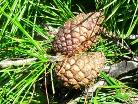
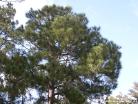
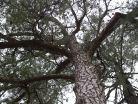
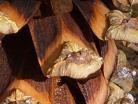
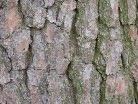
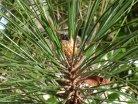
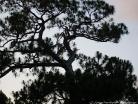

Tree lists:
•A-Z by scientific
name
•A-Z by common
name
•By Family
For state A-Z list click state name below.
•A-Z by scientific
name
•A-Z by common
name
•By Family
For state A-Z list click state name below.
-Color denotes a tree that is rare or endangered




Want to add your tree to our picture gallery? Click here for details!
Map courtesy USDA NRCS PLANTS Database
